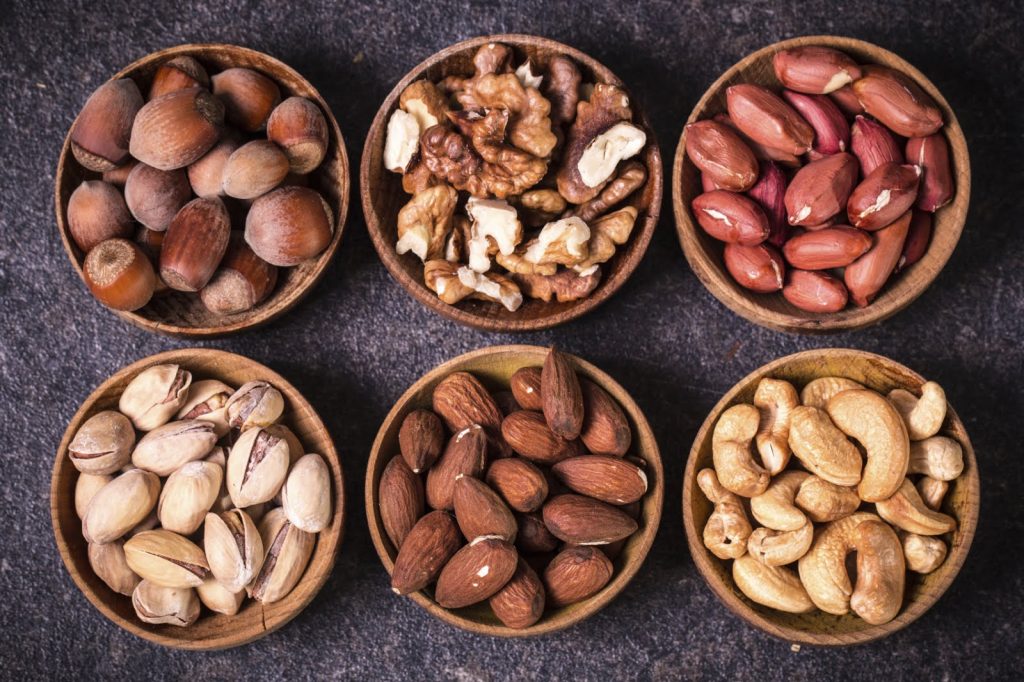
If you’re ever in a survival situation in a forest, chances are that you’ll never have to look far for sources of protein and carbohydrates. Even if you have the worst luck in the world when it comes to hunting or fishing, you can still compensate by identifying one of a handful of tree species that produce edible and nutritious nuts. Let’s take a look at a few examples of species that are commonplace in many parts of the country.
Pecans
Pecans are generally found in the south, and their nuts mature during the late summer and fall. Pecans are easy to chew, and they’re also very easy to shell because nature does most of the work for us. As seeds mature, the shell starts to split until seeds will usually fall out on their own. Consequently, picking shells that are just about to release the nuts will make it easier to break and harvest them. Aside from ease of access, pecans are also highly-nutritious, and a handful will give us a huge shot of carbs, our daily allowance of protein, and a number of other essential vitamins and minerals as well.
The Butternut Tree
The butternut tree can be found throughout much of the country east of the Mississippi River and North of Tennessee. They are also some of the most nutritious and calorie-rich nuts around. They contain about 30 percent protein and 60 percent of good, healthy fat, and a pound of nuts will have around 3000 calories. Consequently, a couple of handfuls can be enough to live on every day as long as you supplement the nuts with some fruits or veggies.
Hickory
Hickory nuts are related to walnuts in their composition and nutritional content. They also are protected by a hard outer shell, but they’re a lot easier to crack open than walnuts. Different species of hickory are found across the country, and this means that most of us are not far from being able to tap into this food source in an emergency. Best of all, hickory nuts are easy to dry and process for long-term storage, and they also hold up pretty well on their own once they’ve been shelled. This means that we can gather significant amounts when they’re abundant and store them for anywhere from a couple of weeks to a few months without having to do much to preserve them.
Walnuts
Next to the butternut, walnuts are the best source of nut-based nutrition in the wild. Unfortunately, they’re also the most-difficult to crack. However, once you’ve separated the nut from the shell, you can expect to enjoy about 25 percent protein and 55 percent carbohydrates, and one handful has close to 200 calories. Consequently, you don’t have to shell a lot of nuts in order to enjoy the fruits of your labor. They are also known to have a long shelf life just like their hickory counterparts.
Western Pines
Most pine nuts are nutritious, but there are a few species that stand out from the rest. Fortunately, some of the most nutrient-rich pines are found in the western part of the country, and this includes areas where dense forests and food options may otherwise be scarce. Ponderosa, Stone, Pinion and Sugar pines are a few examples of good species to look for. The only problem is that you usually have to get to higher elevations, starting around 5000 feet, in order to reach the treeline. However, it’s worth the hike when considering how easy it is to harvest the nuts, how abundant they are, and how much nutrition you can get from your haul.
Nut-bearing trees are easily-overlooked, despite the fact that we can be surrounded by them at any given point in time. Take some time to become familiar with identifying species in your area that can turn out to be an excellent source of nutrition in an emergency. You can also start foraging seeds now, and experiment with different ways to prepare, process and store them. Not only will this give you a leg-up during a survival situation, but you can enjoy their benefits now as well.
